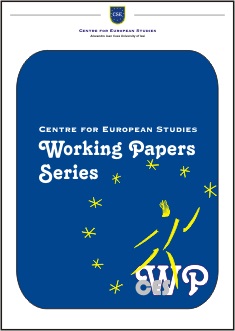MONETARY POLICIES AND INDUSTRIAL FLUCTUATIONS IN EAST EUROPEAN COUNTRIES
MONETARY POLICIES AND INDUSTRIAL FLUCTUATIONS IN EAST EUROPEAN COUNTRIES
Author(s): Mihaela IfrimSubject(s): Economy
Published by: Editura Universităţii »Alexandru Ioan Cuza« din Iaşi
Keywords: monetary expansion, business cycle, capital goods industry, consumer goods industry, East European countries
Summary/Abstract: Industrial fluctuations are closely related to the evolution of relative prices of produced goods and resources involved in production activity. Industrial fluctuations, as an expression of forces manifested in the real economy, are caused by changes in individuals’ consumption and investment decisions, produced within expansionary monetary policies. The ease of obtaining a bank loan in the context of decreasing interest rates and of larger amounts of money caused an increase in individuals’ demand for goods resulted from longer, capital intensive production processes. The rise in prices of intermediate and capital goods in a faster pace compared to the increase in prices of consumer goods is doubled by the increase of the share of higher order industries in the structure of production. The objective of this paper is to analyze changes in industrial structure of Eastern Europe countries within the policies of quick access to monetary resources. The analyzed states (Bulgaria, the Czech Republic, Hungary, Poland and Romania) are part of the European Union and have autonomous monetary policies, meaning that they have not yet adopted the common currency. In all economies analyzed, we find approximately the same patterns of monetary expansion and industrial fluctuations.
Journal: CES Working Papers
- Issue Year: 7/2015
- Issue No: 1
- Page Range: 98-110
- Page Count: 13
- Language: English

